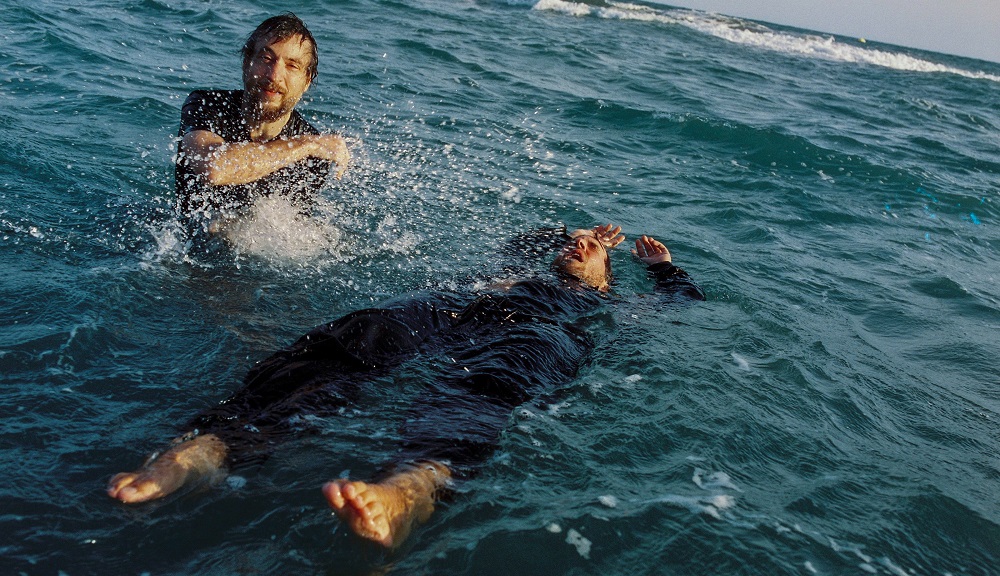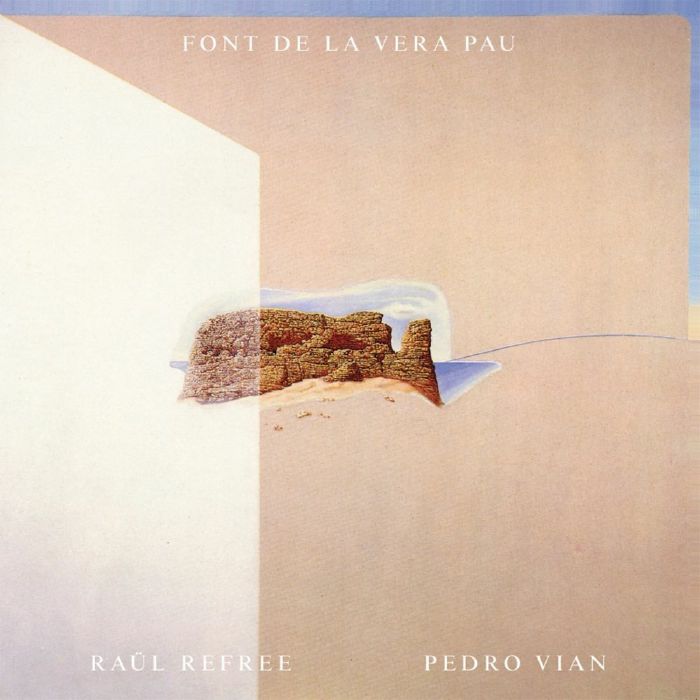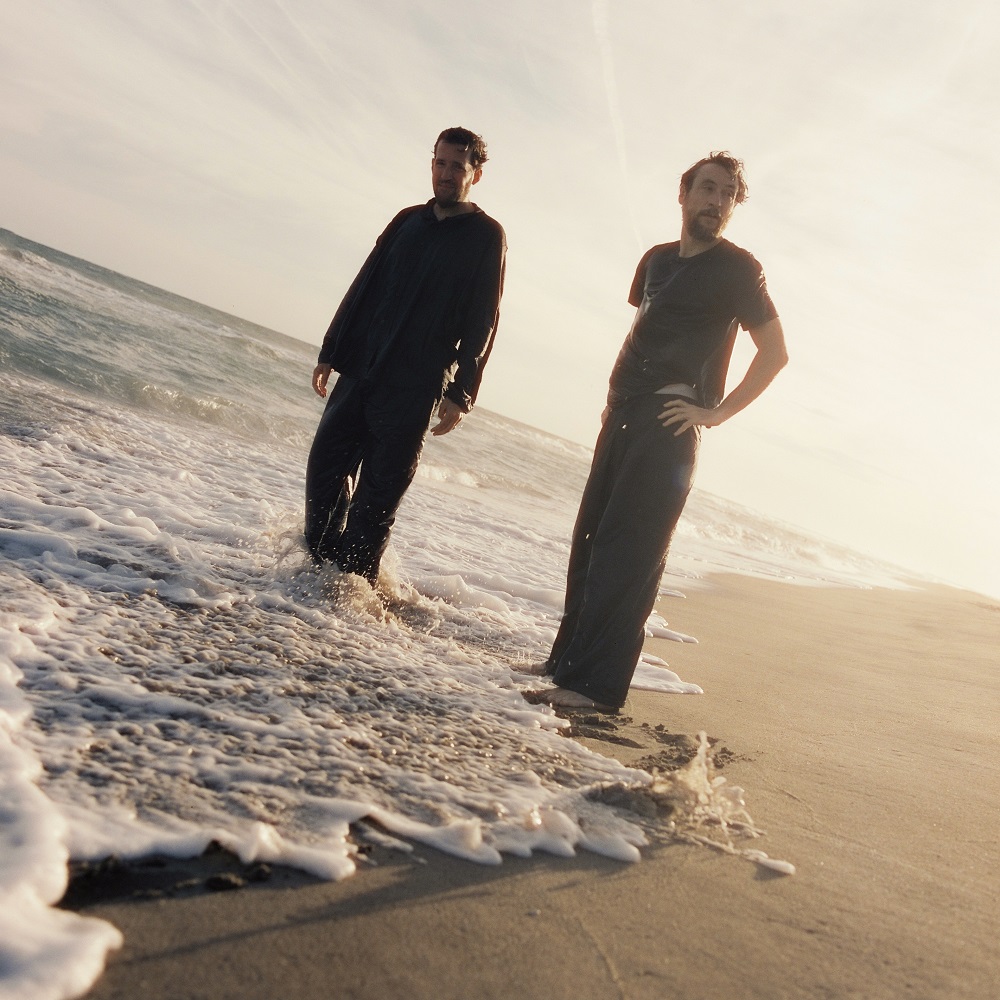Raül Refree and Pedro Vian interview – “We just like music in all its forms” | Juno Daily
Psychedelic, minimal magic from the Barcelona duo

Font de la Vera Pau is the result of two creative minds from the Barcelona avant-garde music scene – Raül Refree and Pedro Vian – combining forces.
Set to emerge via Modern Obscure Music on November 10, the album – created almost entirely on synth, piano and organ – has its roots in 2020, when Pedro returned to Barcelona after a two-year stint of living in Amsterdam.
Created on a piano, synth and organ and incoporating elements of psychedelia and minimalism, it draws on the spirituality of cosmic jazz figures like Alice Coltrane and Sun Ra, the enveloping ambient soundscapes of Japan’s Haruomi Hosono and Hiroshi Yoshimura and the meditative minimalism of Steve Reich or Terry Riley.
We were intrigued when we heard it – as you will doubtless be – so we asked Refree and Vian to tell us more about its impetus, its influences and how it took shape…
First things first, please introduce yourselves and tell us a bit about your backgrounds, previous recording/performance history and what you do on the album…
Raul: Hi I am Raül Refree, I don’t really know how to define myself in music. I try to find emotion in what I play and I don’t really care about genres, I feel music as a whole thing. I love to improvise and experiment but always as a way to create music. I play many instruments, especially pianos and guitars, but I prefer to think than to play. That’s why I became a producer I guess. On the record I play organ and prepared piano.
Pedro: It’s Pedro Vian, music composer and electronic musician from Barcelona, I created the record label Modern Obscure Music ten years ago and this is my second collaborative album, last year I released an album with Daniele Mana. I recorded this album with Raül basically making the electronic part.

So we know you’re both from the Barcelona avant garde scene, but talk us through precisely how you came to record together… It goes back to Pedro returning to the city after living in Amsterdam for two years?
Raul: Pedro showed me some music he had been working on, and he thought it was not complete, he thought it needed something that I could play on top. So that’s what I did, I improvised on top and I think no more than one or two takes, I thought it had to be very organic because his electronics were very clear and spacefull. I though the timbre of a an old positive organ and a prepared piano, two acoustic and very special instruments, would fit good on the compositions.
Pedro: I invited Raül to join the project PRSNT, a multidisciplinary project released on Modern Obscure Music, then we had the opportunity to play together at Sonar Festival, after that we decided to work on an album together. Yes, just when I came back from Amsterdam y started to record the first lines of this collaborative project.

Did you have a specific process for writing/recording the tracks? How much – if any – is it a case of pressing record and seeing what happens? Or is there another masterplan at play?
Raul: I think I answered this question on the previous one. But I can add some info about the last part of the process: the mixes. Everything was mixed analogue, through a Trident board from mid 70s with no automation. So the mixes were in a way part of the composition because the structures changed very much on the mixing process and some very interesting feedbacks and distortions were made passing the signals through the reverbs and tape delays.
Pedro: I think we have a special connection, the music flows easily, we understand each other really well so why not write an album together, first I recorded my part and Raul played it over, three recording sessions in different spaces, expanded in two years.
Was it the idea to make an album together or more a case, again, of seeing what happens. Which were the first tracks to be made and which were the last, and can you sense a difference in them? Was there a point at which you thought “this is becoming an album”?
Raul: I think we both knew it had to be an album. That’s why there were no first tracks for me, I played all the tracks the same days, one after the other. It’s true that we had the idea of what it could become after our Sonar show (which was the first step to the album)
Pedro: From the first day I recorded ten pieces of music, then we recorded the other instruments over the ten tracks, the idea was always to do an album, never a single tracks, this music only works as an album is a long and meditative experience, a time to relax, a time for a reflexion.

What do you feel were the major influences – musical or otherwise – on the LP? Was there any amazing music you were able to introduce each other to?
Raul: I have to mention Sakamoto, he will always be a major influence for me, but there are other names that, now with some perspective, I think were influences for the album: Sarah Davachi, Amnesia Scanner, Oliver Coates, Hildegard Von Bingen, Johnny Greenwood.
Pedro: There are a lot of influences, basically all the music we have heard before, we both don’t understand about styles, we just like music in all its forms. I understand music as a universal language. Categorisation in this case takes a back seat.
Will you be doing more together? And what about live shows? What’s next for you both individually and as a joint enterprise?
Raul: We are not thinking about playing a tour, but we’d love to play some shows for sure. About the future, we’ll see. We like the record and it’s good it happend, we are both very happy with it.
Pedro: I am still working on new music mostly everyday, so new things will come for sure, to work together with Raul? Why not? I’m always open to collaborate and explore new forms of music and share it with others, the experience of composing it, recording it and listening to it. Soon we are going to announce some shows.
To pre-order your copy of Font de la Vera Pau click here


